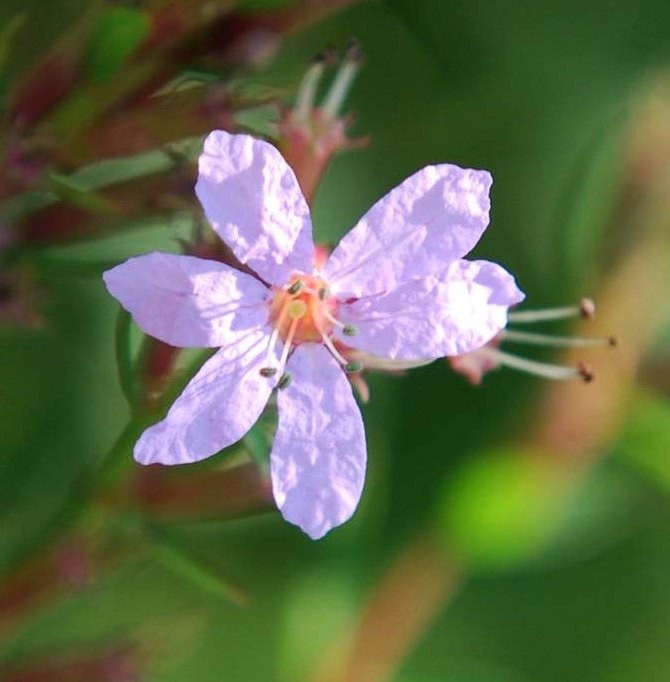Winged loosestrife
(Lythrum acutangulum)

Description
Lythrum alatum, commonly known as winged loosestrife, winged lythrum or (in Britain and Ireland) angled purple-loosestrife, is a species of flowering plant belonging to the family Lythraceae. It is endemic to wetland areas in central and eastern United States and Ontario. Winged loosestrife is an upright, branching herbaceous plant growing to about one metre tall. The stems are woody in the lower parts of the plant, square in cross section with slightly winged angles. The leaves are mostly opposite, stalk-less, broadly oblong and tapering towards the tip. They have smooth un-toothed edges. The flowers are borne singly or in pairs in the axils of the much reduced upper leaves. The calyx forms a tube about 0.6 millimetres long and has six pointed teeth. The six rose-pink petals have a magenta central vein and are about 5 millimetres long and 2 millimetres wide. There are six stamens with pink filaments and purple anthers. The stigma is white and the style green. The ovary is superior and the fruit is an elongated capsule with numerous tiny seeds. Winged loosestrife is found growing in wet meadows and fens, pond and lake margins, beside streams and by railroads. It is listed as endangered in Connecticut, Maryland, and Pennsylvania. It was thought to be extinct in Vermont until it was found in the town of Monkton in 2017. Lythrum is a genus of 38 species of flowering plants native to the temperate world. Commonly known as loosestrife (a name they share with Lysimachia, which are not closely related), they are among 32 genera of the family Lythraceae. They are herbaceous annuals or perennials. Typically they have square stems, narrow stalkless leaves, and spikes of star-shaped flowers in shades of purple, pink and white. They are especially associated with boggy areas, river banks and ponds, though in cultivation they often tolerate drier conditions. The species L. salicaria (purple loosestrife) and L. virgatum are found in cultivation. Some species of Lythrum are heterostylous, such as the tristylous (occurring in three forms) L. salicaria. Lythrum species are used as food plants by the larvae of some Lepidoptera species, including the small emperor moth, the engrailed, the Hebrew character, and the V-pug. The genus Lythrum is listed as a noxious weed in Michigan, North Carolina, and Wisconsin.
Taxonomic tree:







